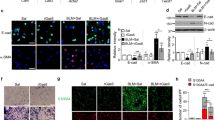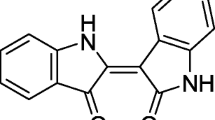Abstract—
Dihydrotanshinone (DIH) is an extract of Salvia miltiorrhiza Bunge. It has been reported that DIH could regulate NF-κB signaling pathway. The aim of this study was to investigate whether DIH could protect mice from lipopolysaccharide (LPS)-induced acute lung injury (ALI) in mice. In this study, sixty mice were randomly divided into five groups, one group as blank control group, the second group as LPS control group, and the last three groups were pre-injected with different doses of DIH and then inhaled LPS for experimental comparison. After 12 h of LPS treatment, the wet-dry ratio, histopathlogical changes, and myeloperoxidase (MPO) activity of lungs were measured. In addition, ELISA kits were used to measure the levels of TNF-α and IL-1β inflammatory cytokines in bronchoalveolar lavage fluids (BALF), and western blot analysis was used to measure the activity of NF-κB signaling pathway. The results demonstrated that DIH could effectively reduce pulmonary edema, MPO activity, and improve the lung histopathlogical changes. Furthermore, DIH suppressed the levels of inflammatory cytokines in BALF, such as TNF-α and IL-1β. In addition, DIH could also downregulate the activity of NF-κB signaling pathway. We also found that DIH dose-dependently increased the expression of LXRα. In addition, DIH could inhibit LPS-induced IL-8 production and NF-κB activation in A549 cells. And the inhibitory effects were reversed by LXRα inhibitor geranylgeranyl pyrophosphate (GGPP). Therefore, we speculate that DIH regulates LPS-induced ALI in mice by increasing LXRα expression, which subsequently inhibiting NF-κB signaling pathway.








Similar content being viewed by others
Availability of Data and Materials
The data used to support the findings of this study are available from the corresponding author upon request.
References
Parker, J.C. 2011. Acute lung injury and pulmonary vascular permeability: Use of transgenic models. Comprehensive Physiology 1: 835–882.
Matuschak, G.M., and A.J. Lechner. 2010. Acute lung injury and the acute respiratory distress syndrome: Pathophysiology and treatment. Missouri Medicine 107: 252–258.
Tomashefski, J.F. 2000. Pulmonary pathology of acute respiratory distress syndrome. Clinics in Chest Medicine 21: 435–466.
Chignard, M., and V. Balloy. 2000. Neutrophil recruitment and increased permeability during acute lung injury induced by lipopolysaccharide. American Journal of Physiology-Lung Cellular and Molecular Physiology 279: L1083–L1090.
Blank, R., and L.M. Napolitano. 2011. Epidemiology of ARDS and ALI. Critical Care Clinics 27: 439–458.
Chen, H., C. Bai, and X. Wang. 2010. The value of the lipopolysaccharide-induced acute lung injury model in respiratory medicine. Expert Review of Respiratory Medicine 4: 773–783.
Lu, Y.C., W.C. Yeh, and P.S. Ohashi. 2008. LPS/TLR4 signal transduction pathway. Cytokine 42: 145–151.
Kawai, T., and S. Akira. 2007. Signaling to NF-kappaB by Toll-like receptors. Trends in Molecular Medicine 13: 460–469.
Endo-Umeda, K., and M. Makishima. 2019. Liver X receptors regulate cholesterol metabolism and immunity in hepatic nonparenchymal cells. International Journal of Molecular Sciences 20: 5045.
Liebergall, S.R., J. Angdisen, S.H. Chan, Y.J. Chang, T.F. Osborne, A.F. Koeppel, S.D. Turner, and I.G. Schulman. 2020. Inflammation triggers liver X receptor-dependent lipogenesis. Molecular and Cellular Biology 40: e00364-e419.
Miao, C.M., K. He, P.Z. Li, Z.J. Liu, X.W. Zhu, Z.B. Ou, X.Z. Ruan, J.P. Gong, and C.A. Liu. 2016. LXRalpha represses LPS-induced inflammatory responses by competing with IRF3 for GRIP1 in Kupffer cells. International Immunopharmacology 35: 272–279.
Fu, Y.H., Y. Tian, Z.K. Wei, H. Liu, X.J. Song, W.B. Liu, W.L. Zhang, W.L. Wang, Y.G. Cao, and N.S. Zhang. 2014. Liver X receptor agonist prevents LPS-induced mastitis in mice. International Immunopharmacology 22: 379–383.
Liu, B., Z.Q. He, J.J. Wang, Z.Y. Xin, J.X. Wang, F. Li, and Y.H. Fu. 2018. Taraxasterol inhibits LPS-induced inflammatory response in BV2 microglia cells by activating LXR alpha. Frontiers in Pharmacology 2018 (9): 278.
Fu, Y.H., Z.Y. Xin, B. Liu, J.X. Wang, J.J. Wang, X. Zhang, Y.N. Wang, and F. Li. 2018. Platycodin D inhibits inflammatory response in LPS-stimulated primary rat microglia cells through activating LXR alpha-ABCA1 signaling pathway. Frontiers in Immunology 8: 1929.
Su, K., G.X. Zhang, X. Zhang, and W. Jiang. 2019. Chikusetsusaponin V attenuates lipopolysaccharide-induced acute lung injury in mice by modulation of the NF-kappa B and LXR alpha. International Immunopharmacology 70: 174–179.
Lee, D.S., S.H. Lee, J.G. Noh, and S.D. Hong. 1999. Antibacterial activities of cryptotanshinone and dihydrotanshinone I from a medicinal herb Salvia miltiorrhiza Bunge. Bioscience Biotechnology and Biochemistry 63: 2236–2239.
Yuan, R.Y.K., L.T. Huang, L.J. Du, J.F. Feng, J. Li, Y.Y. Luo, Q.M. Xu, S.L. Yang, H.W. Gao, and Y.L. Feng. 2019. Dihydrotanshinone exhibits an anti-inflammatory effect in vitro and in vivo through blocking TLR4 dimerization. Pharmacological Research 142: 102–114.
Guo, Y.L., X.X. Wu, Q. Wu, Y.F. Lu, J.S. Shi, and X.P. Chen. 2018. Dihydrotanshinone I, a natural product, ameliorates DSS-induced experimental ulcerative colitis in mice. Toxicology and Applied Pharmacology 344: 35–45.
Zhao, W.W., C.X. Li, H.W. Gao, Q. Wu, J.S. Shi, and X.P. Chen. 2016. Dihydrotanshinone I attenuates atherosclerosis in ApoE-deficient mice: Role of NOX4/NF-kappa B mediated lectin-like oxidized LDL receptor-1 (LOX-1) of the Endothelium. Frontiers in Pharmacology 7: 418.
Zhou, X., V. Razmovski-Naumovski, D. Chang, C.G. Li, A. Kam, M. Low, A. Bensoussan, and K. Chan. 2016. Synergistic effects of Danshen (Salvia Miltiorrhiza Radix et Rhizoma) and Sanqi (Notoginseng Radix et Rhizoma) combination in inhibiting inflammation mediators in RAW264.7 cells. Biomed Research International.
San, Z.H., Y.H. Fu, W. Li, E.S. Zhou, Y.M. Li, X.J. Song, T.C. Wang, Y. Tian, Z.K. Wei, M.J. Yao, et al. 2014. Protective effect of taraxasterol on acute lung injury induced by lipopolysaccharide in mice. International Immunopharmacology 19: 342–350.
Ruffini, E., A. Parola, E. Papalia, P.L. Filosso, M. Mancuso, A. Oliaro, G. Actis-Dato, and G. Maggi. 2001. Frequency and mortality of acute lung injury and acute respiratory distress syndrome after pulmonary resection for bronchogenic carcinoma. European Journal of Cardio-Thoracic Surgery 20: 30–37.
Bruijn, M., L.B. van der Aa, R.R. van Rijn, A.P. Bos, and J.B.M. van Woensel. 2007. High incidence of acute lung injury in children with Down syndrome. Intensive Care Medicine 33: 2179–2182.
Abraham, E., A. Carmody, R. Shenkar, and J. Arcaroli. 2000. Neutrophils as early immunologic effectors in hemorrhage- or endotoxemia-induced acute lung injury. American Journal of Physiology-Lung Cellular and Molecular Physiology 279: L1137–L1145.
Yamasawa, H., Y. Ishii, and S. Kitamura. 1999. Cytokine-induced neutrophil chemoattractant in a rat model of lipopolysaccharide-induced acute lung injury. Inflammation 23: 263–274.
Wright, J.G., and J.W. Christman. 2003. The role of nuclear factor kappa B in the pathogenesis of pulmonary diseases: Implications for therapy. American Journal of Respiratory Medicine 2: 211–219.
Maruyama, K., Y. Takada, N. Ray, Y. Kishimoto, J.M. Penninger, H. Yasuda, and K. Matsuo. 2006. Receptor activator of NF-kappa B ligand and osteoprotegerin regulate proinflammatory cytokine production in mice. Journal of Immunology 177: 3799–3805.
Rahman, A., and F. Fazal. 2011. Blocking NF-kappaB: An inflammatory issue. Proceedings of the American Thoracic Society 8: 497–503.
Zhu, R.T., Z.B. Ou, X.Z. Ruan, and J.P. Gong. 2012. Role of liver X receptors in cholesterol efflux and inflammatory signaling. Molecular Medicine Reports 5: 895–900.
Jin, S.H., J.H. Yang, B.Y. Shin, K. Seo, S.M. Shin, I.J. Cho, and S.H. Ki. 2013. Resveratrol inhibits LXR alpha-dependent hepatic lipogenesis through novel antioxidant Sestrin2 gene induction. Toxicology and Applied Pharmacology 271: 95–105.
Fu, Y.H., X.Y. Hu, Y.G. Cao, Z.C. Zhang, and N.S. Zhang. 2015. Saikosaponin a inhibits lipopolysaccharide-oxidative stress and inflammation in Human umbilical vein endothelial cells via preventing TLR4 translocation into lipid rafts. Free Radical Biology and Medicine 89: 777–785.
Author information
Authors and Affiliations
Contributions
Xueshibojie Liu designed the experiment; Xueshibojie Liu, Jinghui Yang, Jing Yue, Guangxin Zhang, and Kai Su did the experiment; Chengbi Xu analyzed the data; Xueshibojie Liu wrote the paper; Jing Yue, Kai Su, and Guangxin Zhang revised the paper.
Corresponding author
Ethics declarations
Ethics Approval and Consent to Participate
All the experimental protocols in this study were approved by the Institutional Animal Care and Use Committee of Jilin University. All authors consent to participate this research.
Consent for Publication
All authors consent to publish this article.
Competing Interests
The authors declare no competing interests.
Additional information
Publisher's Note
Springer Nature remains neutral with regard to jurisdictional claims in published maps and institutional affiliations.
Rights and permissions
About this article
Cite this article
Yue, J., Su, K., Zhang, G. et al. Dihydrotanshinone Attenuates LPS-Induced Acute Lung Injury in Mice by Upregulating LXRα. Inflammation 45, 212–221 (2022). https://doi.org/10.1007/s10753-021-01539-3
Received:
Accepted:
Published:
Issue Date:
DOI: https://doi.org/10.1007/s10753-021-01539-3




